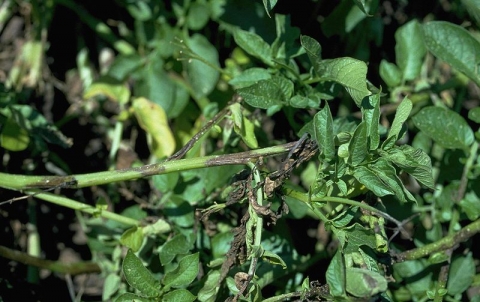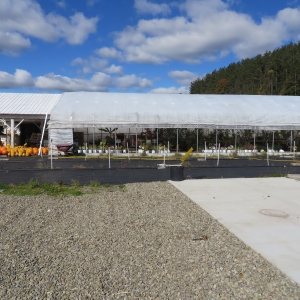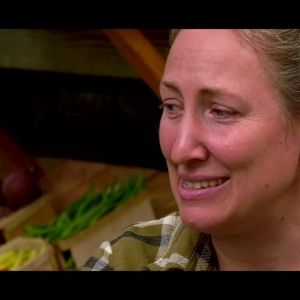By David Schaut, Master Gardener Volunteer, Cornell Cooperative Extension.
Late blight has arrived and established itself in western New York. Growers—large and small—will soon have to deal with this disease if they haven’t already. It is a serious disease that affects tomatoes and potatoes, as well as petunias, tomatillos, and members of the nightshade family. Infection can happen early in the season from volunteer plants growing from diseased potatoes that were not harvested last season or compost piles where culled potatoes were dumped. The disease does NOT overwinter on dead tomato plant debris from last season as the oomycete pathogen can only survive on living tissue (like the potato tuber). However, infected tomato transplants brought from other areas in the spring can have the disease and cause an outbreak.
The pathogen produces millions of spores that travel through the air and land on the leaves of tomato and potato plants, especially during wet weather. Spores can also be washed through the soil to infect potato tubers. Late blight was controlled by fungicides in the 1970s, but resistant strains began appearing in the U.S. in the 1980s.
The disease is characterized by black, greasy-looking lesions on the leaves, stems, and fruit of infected tomato and potato plants. The lesions appear three to five days after the plant has become infected (usually following wet weather). Gardeners can prevent late blight by planting certified seed potatoes, characterized by sound, blemish-free tubers (like the Defender and Elba varieties), or by planting late-blight resistant tomatoes (like Defiant or Mountain Merit). Before planting, you should destroy all of the previous year’s potato plant growth and any volunteer potato plants that have emerged: thoroughly till them under or pull them up. Completely compost the old plants or bag them. Photo: Infected tip of potato stem, Cornell Plant Pathology.
If your garden is already planted, there are some methods for trying to control the disease. A number of fungicides are available, though they must be on the plants before the spores land; infection occurs when the leaves are wet. The fungicides must be applied regularly until harvest. Read the fungicide label for amount of days between application times. Choose a fungicide that contains maneb, mancozeb, chlorothanfil, or fixed copper as an active ingredient, and has tomato or potato blight on the label. Some, not all, of the fungicides containing fixed copper are approved for organic gardening.
If you don’t want to use fungicides, remove and destroy infected plants as soon as the infection appears. It is best to destroy them on a dry, sunny day because the spores die quickly under those conditions. However, DON’T wait for dry weather, as soon as you notice symptoms take action; during wet weather, bag the plants to stop the spread of the spores to farms and neighboring gardens. Under wet or dry conditions, bag the diseased plants and leave the bag in the sun to help destroy the spores before getting rid of the material. Additional preventive measures include “hilling” the soil around potato plants to prevent soil-born infections and watering plants at the base rather than spraying the leaves. Wet leaves make it easier for your plants to become infected.
If late blight has infected your garden, you will likely lose most of this year’s crop. If you destroy all of the infected plants and plant disease-resistant varieties next year—and remain vigilant—you can keep the disease at bay.











